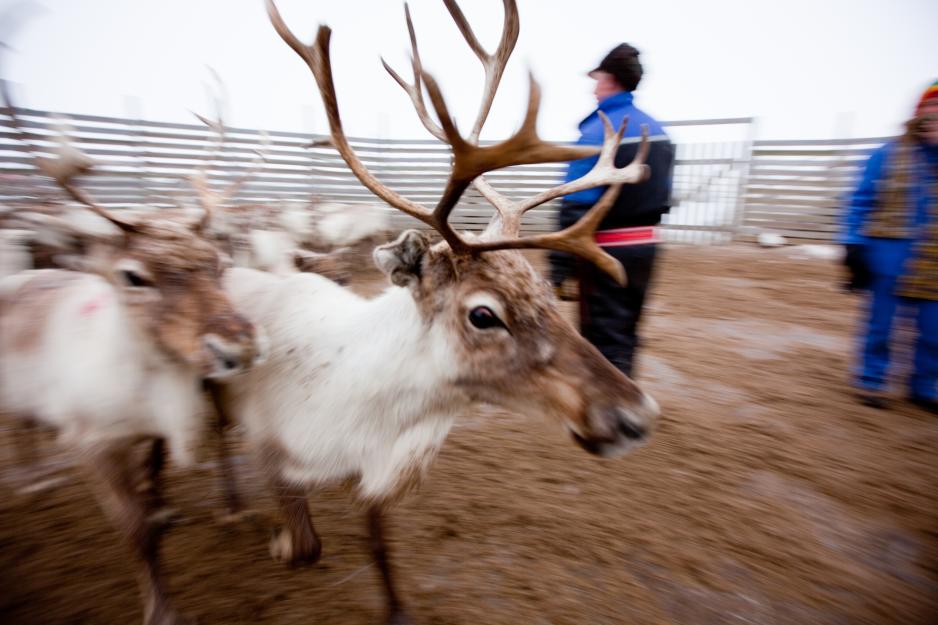Living conditions in the Arctic are challenged

In 2011 the Arctic Council initiated an extensive mapping of the large changes in the Arctic and how this affects local communities in the north. The report is now available and points to large challenges, both locally and globally.
The Arctic Resilience Report was initiated following a Swedish initiative in the Arctic Council. Its aim was to analyze how societies in the north are affected by and respond to changes in the climate and their surroundings. The researchers have identified changes and processes in the Arctic eco-system and have looked at how these affect the living conditions for the inhabitants of the north.
- This is the first wholesome consideration of the Arctic from a socio-ecological perspective, researchers Julia Olsen and Grete Hovelsrud of Nordland Research Institute say in a statement. The two have participated in the developing of the report. The study was led by the Stockholm Environmental Institute and the Stockholm Resilience Centre at Stockholm University and was supported by the Swedish authorities.
Critical changes
The researchers point to a number of so-called "tipping points", i.e. critical changes that not only affect the Arctic areas, but also strengthen and expedite processes that affect the entire globe.
The ice melting is very visible, receives widespread attention and affects the climate and sea areas in a number of ways. The warming of the ocean leads to significant changes in the ecosystem. Fish migrate. The flora and the fauna change, as do landscapes, often with significant consequences for the local communities, in particular in areas where traditional foraging and living conditions dominate.
The report investigates what inhabitants in the Arctic can do in order to increase their resilience in light of the extensive environmental and climatic changes, changes that kept surprising both inhabitants and researchers with their strength and extent. A number of local communities are mentioned in the report, and they demonstrate large variations in how they meet the consequences of the climate changes.
Garry Peterson of Stockholm Resilience Centre and Marcus Carson of Stockholm Environment Institute are editors of the report. They emphasize that the main focus of the report is how the inhabitants of the Arctic, Arctic nations and the Arctic Council together can navigate through a turbulent time with several complicated surprises. The examples outlined in the report are not all negative. Some can also serve as an inspiration in order to adjust to a new era.
Several examples
At the coast of Alaska, erosion, decreasing ice masses and sinkholes are about to make it impossible for many small Inuit communities to survive. Moving is complicated and expensive. No solution is in sight, and the conditions are worsening year by year.
The reindeer herding in Finnmark, Norway, is pointed out as a traditional way of life that is at risk, both due to climate changes that lead to a need for larger herding areas, and because of the development of more industry and shipping in the north.
Changed migration patterns for fish, along with decreasing ice covering, lead to difficult foraging conditions for a vast number of coastal communities. The report points to communities in Greenland, Iceland and Canada as examples of places where the local population has lost some of its most vital resources.
However, the report also points out some bright spots. In Canada there is an Inuit community area that has transitioned from being a traditional foraging area to becoming an internationally recognized center for arts and crafts. This does not only provide income, it also contributes to making the Inuit culture better known internationally.
The extraction industry of the Barents Region is highlighted as an example of good resource management and involves environmental considerations. Local authorities set statutes for the industry, an example worth following when the climate changes are expected to provide easier access to minerals in the northern areas.
In Iceland, coastal communities have developed tourism in order to replace parts of the fishing industry that are in decline, due to changing fish migration patterns. Whale watching and other nature-based activities bring an affluent audience to the north and may provide good alternatives for many small communities.
Local ownership decisive
The main conclusion of the report is that a strengthening of the international cooperation in order to assist northern communities is urgently needed. However, sustainable solutions depend on local management and local ownership. The analysis clearly demonstrates that the most important factor for meeting the challenges in a good way is for the local community to organize the job itself and meet the challenges as a united fellowship.
The researchers are, nevertheless, not optimistic.
- The climate changes pose a significant challenge for the very foundation of living for the population in the Arctic, and there is a limit as to what they can do on their own in order to face these challenges, says Miriam Hultric, one of the main authors behind the report.
- If we don’t manage to limit climate changes by reducing climate gas emissions, there will not be sufficient resilience in the Arctic to meet the coming development.
You can read the whole report here.


